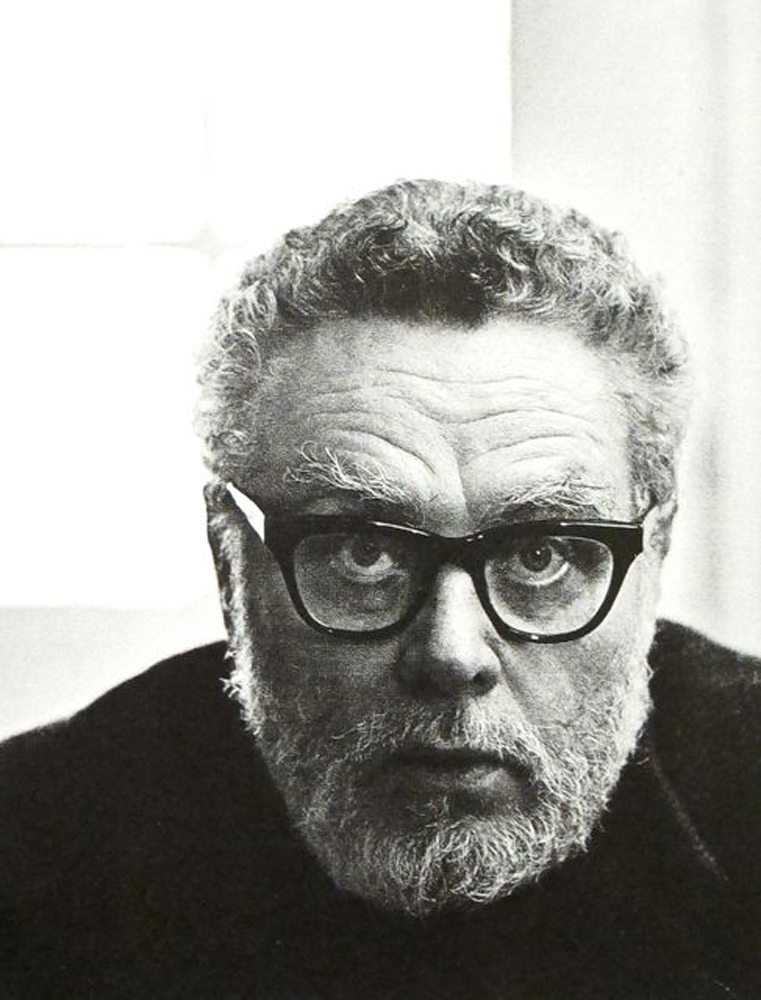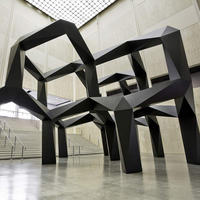More about Tony Smith
Works by Tony Smith

Sr. Contributor
Tony Smith gives hope to Millenials everywhere and creates art that is both literally and figuratively a BIG deal.
In the 1960s when Smith first introduced the monumental metal sculptures he called “presences” because they “just exist[ed]” in their given space (excuse my eye roll) he was presenting something completely new to the art world. As a man he worked for Frank Lloyd Wright, had Tennessee Williams as the best man at his wedding, was besties with Jackson Pollock and bore artistically successful offspring like Kiki Smith, as an artist he helped define minimalism. Not bad for a guy who spent his childhood in an isolation ward battling tuberculoses.
Tony Smith was born in New Jersey in 1912 and named after his grandfather, wealthy waterworks manufacturer Anthony Peter Smith whose initials, and therefore Tony’s, are on all the fire-hydrants of the Eastern Seaboard. All the money in the waterworks (waterworld?) couldn’t help the poor lad from developing a severe case of tuberculoses as a child, but it could build him his own isolation chamber in the garden and private tutors. Though lonely (he weirdly described the pot-bellied stove in his room as becoming a sort-of God to him) his experience with TB designed, built, and opened the door to his architectural and artistic talents. When he wasn’t praying to his stove overlord, he spent his time building model pueblos by covering his medicine boxes with plasticine.
Once recovered Smith spent time being bored at fancy private high schools, becoming disenchanted at Georgetown, and finally being inspired at New York’s Art Students’ League while taking night classes with Jackson Pollack. Though painting was what he trained for in art school, the pueblo building of his youth proved a weighty influence and he soon began pursuing a career in architecture. With only one semester of formal training he would manage to become a clerk and work on projects for Frank Lloyd Wright, and later be commissioned to design “designs” (“homes” was too banal for Smith) for chic artists who apparently cared more for design than experience. However much fellow artists seemed to like Smith, he hated the restrictions of working for clients and soon abandoned architecture to refocus on fine art. Obviously millennials weren’t the first group of youths who refused to settle for passionless jobs.
It was during his second stint as a painter that Smith would find his calling as a sculptor and I’m-sure-very-nice-but-I-can’t-help-feeling-sounds-super-pretentious art theorist. Legend has it that while teaching a design course at Hunter College he assigned his students the job of creating cardboard models which they then had to expand to 5 times their original size. Smith found himself drawn to the power of the enlarged objects and soon began welding together his own large scale presences out of metal. Believing that geometry and nature are inexplicably linked it’s no surprise that he felt solid sculpture actually represented a hollowed out area in the larger structure formed by natural space. In simpler terms, he fused what looks like a bunch of rectangular air vents together at weird angles and put them in public spaces to contrast with their surroundings.
Fun fact, though now considered one of the most influential sculptors of the 20th Century, he didn’t exhibit publicly until 1964 at the age of 52 once again giving hope to millennials around the globe! Pro-tip for people like me who may not be that into his work: imagining Xenomorphs from Alien and John McClain from Die Hard crawling around in his stark metal labyrinths makes them much more amusing.
Featured Content
Here is what Wikipedia says about Tony Smith (sculptor)
Anthony Peter Smith (September 23, 1912 – December 26, 1980) was an American sculptor, visual artist, architectural designer, and a noted theorist on art. He is often cited as a pioneering figure in American Minimalist sculpture.
Check out the full Wikipedia article about Tony Smith (sculptor)













